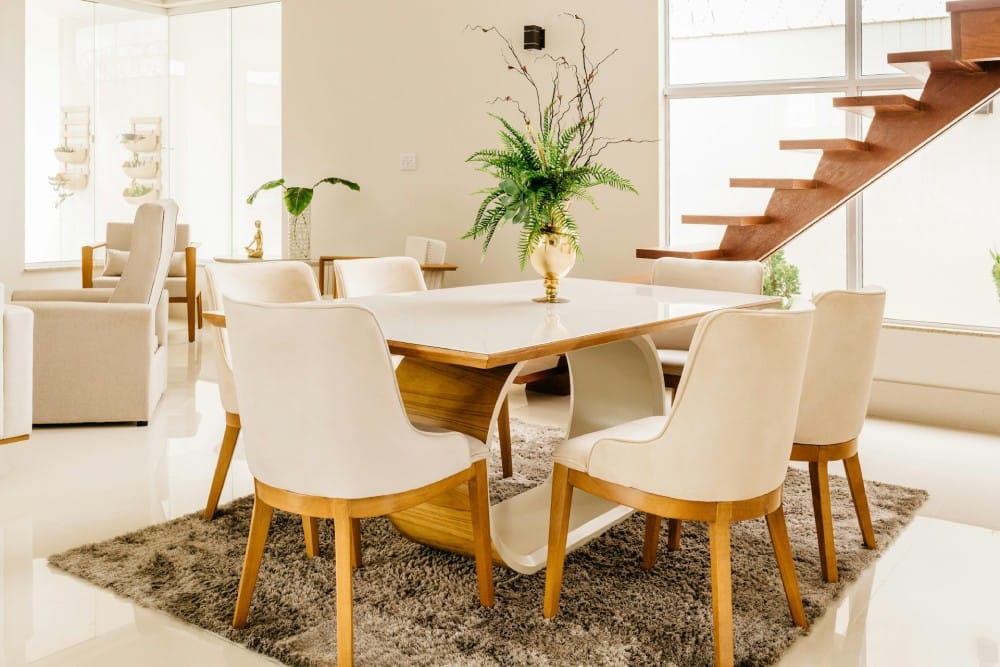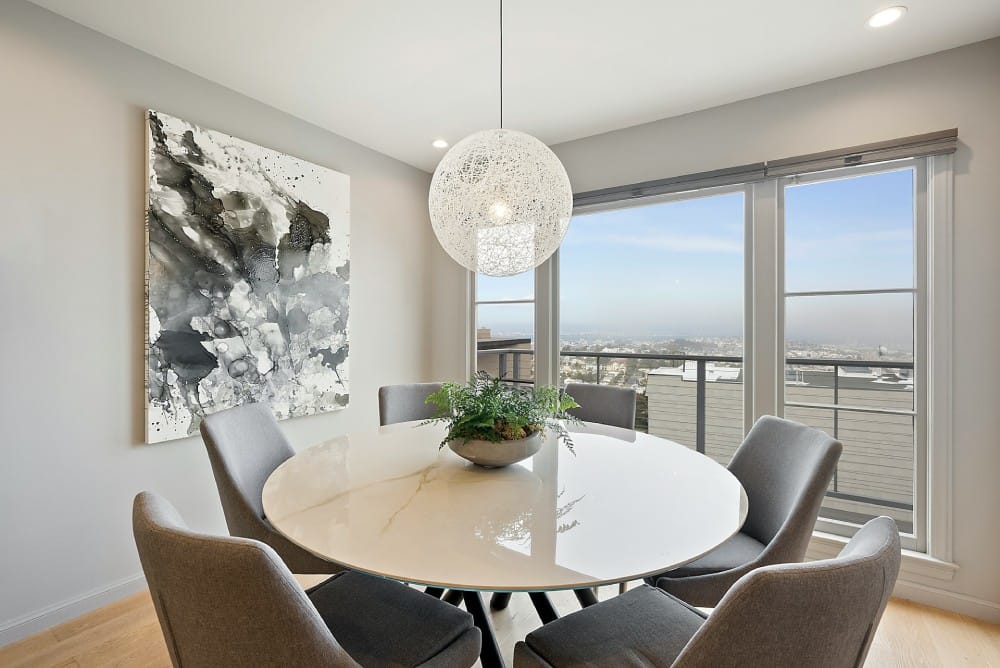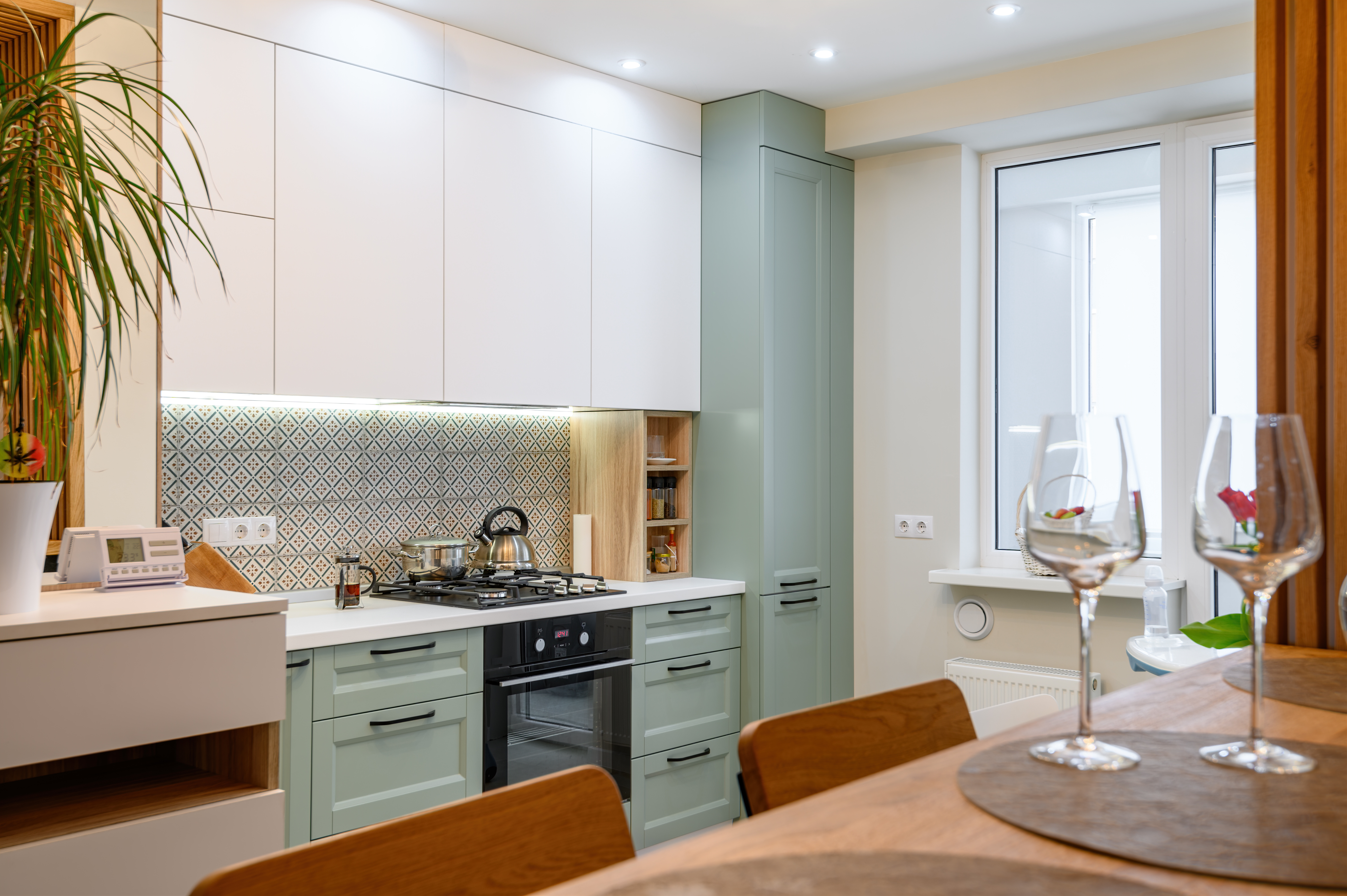How to Choose the Right Dining Table for Your Home
Choosing a dining table for your kitchen or dining room can be challenging. Here are our tips to help you make a better decision.

While the kitchen is often the heart of the home, a proper dining table is where you can enjoy family meals and entertain dinner party guests. Whether you’re looking for a kitchen table or a dining room set, choosing the right one comes down to the size of your space, your taste and your budget.
A dining table is not something you’ll want to buy every six months. It’s an everyday staple that can be a significant investment, and if done right, it will pay dividends for years to come. With so many different dining table styles, selecting the right one can seem daunting. But it doesn’t have to be. Here are our expert tips for choosing the right dining table for your home.
Measure your space
The most important thing about your dining table is that it has to fit in your space. While that might seem obvious, many people make the mistake of not measuring their space before buying a table and end up with an ill-fitting one that is either too big or too small. Once you decide where to put the table, you can determine the appropriate size and shape.

Dining tables are usually larger than they look, and their size can be misleading. You also have to factor in the chairs, including how many and what shape/size to complement the table. You want to consider how much room your guests will have while sitting at the table and whether they can move around and get up freely.

Start by measuring your space and consider the function of the room. As your dining table can be placed in the kitchen, dining room or a multi-use area in your home, it's important to consider any other elements that can interfere with the table. Things like other furniture, windows, doors and walls can impact the table's position and the shape you can use.
Choose the right dining table shape
After completing all your measurements and deciding on the table's size, it's time to choose its shape. As you may know, there are many options for many different spaces and styles.
The most common shapes for dining tables are square and rectangular. Rectangular tables work well in larger rooms and are the most popular option, as they allow you to seat family and friends around a larger table comfortably.


Rectangular tables also work incredibly well in homes with dedicated dining rooms. You can choose a table to fill the room, making it a focal point. These tables also work well in creating division in the dining space with an open plan or shared kitchen space.

Square tables are practical and work well in smaller spaces. With square tables, it's important to keep symmetry in mind and only place them in square rooms. These types of rooms can be challenging when it comes to furniture placement. Square tables (unless extendable) come with the downside of only accommodating four diners. This limits how many people you can entertain for a dinner party.

Round tables are a classic choice that works well in traditional settings. However, they can take up a lot of space and be notoriously tricky to place in smaller or oddly shaped areas. They benefit from being easier for diners to navigate and increasing the room's all-important flow.

A round table may be a great option if this is an important feature for you. Round tables are very intimate, so they may be a better option for someone who throws smaller dinners rather than big parties.

Oval tables are also an excellent option for a kitchen or dining room dining table. They are practical in narrower spaces are offer more seating options than a round table. Oval tables work well in rectangular rooms and come in different sizes and finishings, making them a versatile addition to any dining area.
Best material options for dining tables
What your kitchen table is made of is just as important as its size and shape. Your budget, how you will use the table and where you'll place it will also factor in the price. When factoring it all in, remember that a dining table is an investment that will last you for a few years.
A dining table can be more than just a surface you eat on. It can function as a home office desk, a homework station, an arts and crafts area and a place to bond with friends and family. The table's material needs to adapt to how it will be used.

- Wood is the most common choice for kitchen and dining tables as it is adaptable and works well with different styles and moods. Solid wood tables tend to be more expensive but are also more durable and easier to take care of. Wood can be stained and painted, meaning you can change how it looks without buying another table when you're ready for a new look.

- Veneer is a more affordable option than wood. It can last long if taken care of, but you're limited in what you can do to give it a new look. Look for quality-made tables in timeless styles to get the most out of your purchase.

- Stone table tops like marble or quartz are another beautiful and practical option. Stone is a strong material that will last a lot longer and can add a touch of glamor to your space. However, these materials can be porous and absorb stains and dirt, making them a less ideal option for some. They can also be more expensive and require a lot of maintenance.

- Glass tables are relatively inexpensive and, thanks to their transparent nature, can create a visually larger space. They also create a sense of elegance and are easy to clean. However, glass furniture requires great care to prevent stains, sticky fingerprints, cracks, chips and breaks.

- Metal is another excellent tabletop option. Stainless steel, brass or wrought iron also offer a stain-resistant surface that creates a visually sleek vibe that fits great in modern or industrial-style homes. However, metal tends to be shiny, which shows every fingerprint and may need extra care when cleaning. That's why metal tables are more popular as utility tables and not so much for dining.
- Plastic and laminated tables are also very popular and come in various options. These manufactured materials are durable and easy to care for but can also be perceived as cheap.
You can find tables in all price ranges, but some might still be cost-prohibitive. If you're on a budget, consider second-hand or used furniture stores. They can be a treasure trove of different styles and unique pieces. Don't be afraid to take old furniture and restore it for a brand-new look.
Find the right style
Once you've decided on the size, shape and material, you can move on to the style. Before deciding on what table works best, you need to consider the decor in your home and the vibe you're trying to create. This will help ensure that the table complements the rest of your home's design.

If you're into simplicity, consider functionality when choosing a style. These tables are often wooden and rectangular in shape. They can be used in minimalist environments or, depending on the material will fit well in any dining room.

If your home is more industrial, go for the unfinished look that provides sturdiness and durability. Wood, metals and recycled materials will work well here. If your home is more contemporary, these styles will complement it perfectly. However, these types of tables would not be the right fit for a home with a more elegant and classy vibe.

The farmhouse style can always add some country charm, depending on how rustic and traditional you feel. Usually, tables in this style are sturdy and made from natural wood, which can add depth to your home. Alternatively, you could opt for a pedestal style to avoid the classic four-legged table.
Dining tables for small spaces
Oval-shaped tables are a great option for a dining area because they are made with small spaces in mind. They lack sharp edges and can provide the illusion of taking up less space while offering seating for more than two or three guests.

While not everyone has the privilege of having a dedicated dining room, some people also lack the square footage to have a table space. City dwellers or people in smaller homes may have to use multipurpose furniture such as extendable coffee tables or even breakfast bars to incorporate a table into their homes. You can also use your kitchen island as a dining area.
Don’t forget about the seating
Once you have found the perfect table for you and your home, the work is not done - you still have to choose the chairs! You can often purchase a dining room set with a table and chairs. While a set can be a great solution, it can limit the look and feel you try to create in your home. If that's the case, consider buying the chairs separately.

When choosing chairs, make sure you select the correct height. This includes the appropriate height of your table so that the chairs can move in and out freely and the backs of the chairs.

If the chairs have armrests, they should be able to glide under the table and out again without risking damage to the chair or table - here is where measurements are critical. Allow 10 or 12 inches between the seat and the table.

When you buy a dining room set, all your chairs will be the same and match the table. You can buy a set of chairs separately or mix and match different seating options to give your dining area more personality. This trend has become increasingly popular, offering the freedom to get creative with colors, materials and textures.

Another increasingly popular seating solution is the use of a bench. Benches create a somewhat informal atmosphere, allowing you and your guests to get more comfortable and share your time at the table. They can also offer more seating space and can be combined with chairs to create a more visually interesting focal point.
However, as previously pointed out, this would not be an option in a home that is going for a more "up-scale" aesthetic and would not necessarily be the most practical option should you intend on throwing long dinners or formal parties.
Conclusion
In general, the bigger is better principle works best, as long as you have considered the size of your room. Even if you don't use your table frequently, a good dining table is a great investment and, in many cases, can make a house feel like a home.
Measure the length and width of the space in question, and create a three-foot clearance on all sides so that people can sit and move around comfortably. This formula works for all tables and applies to all spaces. It can save you from future headaches and frustration.


Choose a practical, functional table that best fits your decor. Whether you go more traditional, take a chance at a new trend, or opt for a more creative solution, dining tables are essential in creating a home. We hope this post has offered you valuable tips on which table (and chairs) you will buy for your home.
Need more inspiration? Check out our Instagram for more decorating ideas and tips for your home. Don't forget to use Planner 5D to design your perfect home today.
